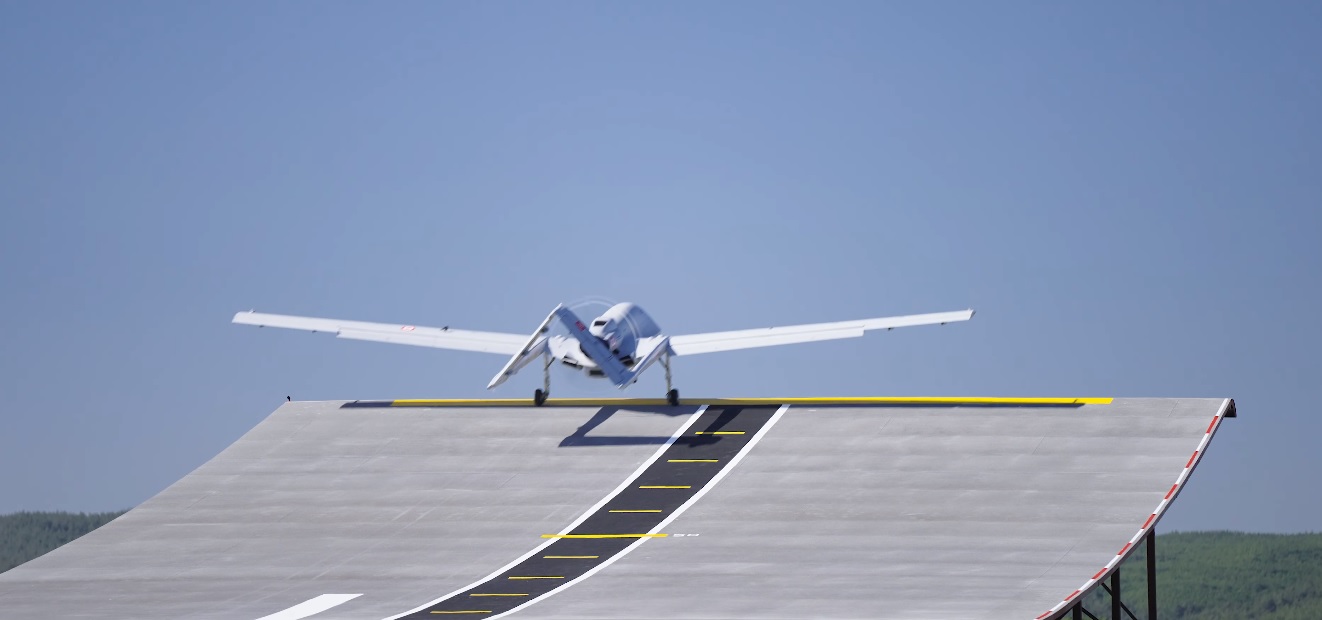Turkey’s Bayraktar TB3 drone makes history by taking off and landing autonomously at TCG Anadolu
The renowned Turkish defense company, Baykar, achieved a historic milestone with its Bayraktar TB3 drone , which successfully performed the first autonomous take-off and landing from the TCG Anadolu, a “short runway” amphibious assault and carrier ship, and flagship of the Turkish Navy.
The Bayraktar TB3 PT1 and PT2 prototypes, after having successfully completed the Ski-jump type inclined ramp take-off tests, were transferred to start the next phase of tests, which included day and night flights around the TCG Anatolia, as well as approach tests.
#BayraktarTB3 PT-2 ? TCG Anadolu ✈️?⚓️?
Dünya Havacılık Tarihinde Bir İlk!
✅ Kısa Pistli Gemiden Kalkış-İniş Testi
☁️ Toplam Uçuş Saati: 823 SaatA groundbreaking moment in aviation history!
✅ Short-Runway Carrier Take-Off & Landing Test
☁️ Total Flight Hours: 823… pic.twitter.com/STnmuewlTK— BAYKAR (@BaykarTech) November 19, 2024
After successfully passing the previous stages of the test program, the piloting phase on the deck of a moving ship began. On November 19, the second prototype of the Bayraktar TB3 made history by performing a fully autonomous landing and takeoff on the runway of the TCG Anadolu. The drone managed to stop on the deck without resorting to external braking systems such as cables or nets, and then returned to the air by taking advantage of the 12-degree inclined ramp located at the bow of the ship.
Bayraktar TB3, the next generation
An evolution of the successful Bayraktar TB2, the Bayraktar TB3 is an armed unmanned aerial vehicle (UAV) system capable of taking off and landing on short runways. It has the capability to conduct reconnaissance, surveillance and intelligence operations, in addition to carrying out strike missions with the Turkish-made smart munitions it carries under its wings. Designed for use on amphibious assault ships and aircraft carriers, thanks to its folding wing structure, this UAV offers the user the ability to conduct armed UAV operations on missions beyond the horizon, both over the sea and over land.
The Bayraktar TB3 and the unmanned combat aircraft KIZILELMA, being designed to operate from ski-jump ramps, will be the core of the TCG Anadolu light aircraft carrier’s embarked combat wing, especially since Turkey does not have access to the Lockheed Martin F-35B. This breakthrough will mark a milestone in the evolution of naval air warfare because, although there are other similar projects to operate unmanned aircraft from runway ships, Turkey is at the forefront of these developments and will likely be the first nation to implement fully unmanned fixed-wing naval aviation.

With an estimated range of 1,000 nautical miles and an endurance of 24 hours, a higher flight ceiling and an improved payload capacity to carry more weaponry, the Bayraktar TB3 will enhance the Turkish Navy’s capabilities by enabling the execution of multiple beyond-the-horizon missions. These include surveillance and reconnaissance, communications relay, (limited) early warning, and attacks on naval and land targets from safe distances. These capabilities will be enhanced by a new generation of munitions developed in Turkey specifically for drones.

/https://aviacionlinecdn.eleco.com.ar/media/2024/11/Bayraktar-TB3-TCG-Anadolu.jpg)
Para comentar, debés estar registradoPor favor, iniciá sesión